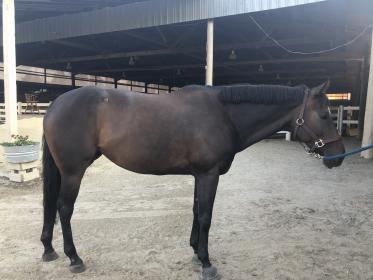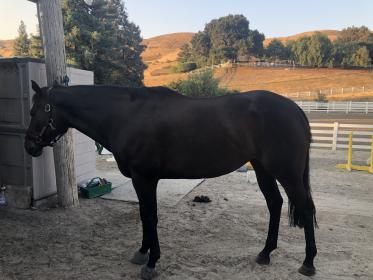please note: we have yearly lameness eval coming up so i might update reports have something to do with this, but she’s always been stronger on the right than the left.
we have decided to go 110% into dressage. I am taking one lesson monthly from a GP gold medalist who was my very first trainer and my weekly trainer (recommended by main trainer) who is a PSG rider.
Gold medalist says my horse is fine and has normal weakness. She has known us from our SI-injury years and when we truly were lame and really really helped us develop the muscles to make up for her old stifle weakness. I have been riding with this aspiring-BNT for about 1.5 years.
PSG trainer has been with us for 2 months since we moved to new barn and doesn’t know us as well. Moved from a barn that was very heavily H/J and horse was being moved into eventing. I rode once a week and didn’t show, but had a leaser ride and train her for me.
Wanted to share videos of my girl to see if anyone could spot anything “funny.” i am a hypochondriac and am looking for ways to work myself into a panic before our lameness exam…
Gold Medalist says she is sound. PSG rider says no.
She gained about ~100 lbs since moving from h/j/eventing barn where she was barely hitting 1050, and is now a little under 1200 (gained even more weight since these videos about 2 weeks ago… muscled out of her medium saddle into a wide in under 4 weeks). We have been at new barn for a little over 2 months and prior to that she was put in quarantine stall rest for 4 weeks due to a bad virus that struck our barn, and no horses could go anywhere. There was some weight gain from that.
She is a lot more “uphill” on the left lead but her right hind is her weaker hind according to what we can SEE. right lead has always been more “downhill,” with a longer stride and she tends to sort of go like an out of control train, just long and forward and unbalanced. Her right shoulder and hind is more developed than her left, and saddle fitting is tough…
right lead
https://www.youtube.com/watch?v=UGEBCp4KYF8
left lead



